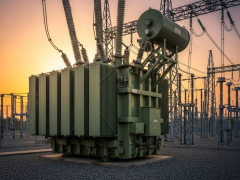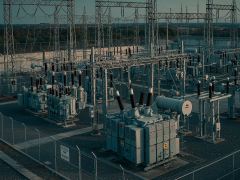by Fereidoon Sioshansi, PhD, Menlo Energy Economics
Everything is big in the US including its gigantic, big box stores – the Walmarts, Targets, Ikeas, Home Depots – and even bigger distribution centres and warehouses such as Amazon’s colossal fulfillment centres, which are larger than football fields. Plus, countless shopping malls and strip shopping centres.
What they have in common is enormous flat roofs in load centres across America. As reported in an article in Time magazine, this offers an enormous untapped solar potential.
How big a potential? According to Time, there are an estimated 109 000 acres of prime, solar-panel-ready rooftop real estate in America alone. The National Renewable Energy Laboratory (NREL) did the numbers in 2016 and says covering this surface area with solar panels would generate more than 50 million MWhs of electricity per annum, enough to supply the needs of 5,2 million households. NREL figures each acre, on average, will produce 477 MWhs per year.

Based on rough calculations, the average Walmart, which has approximately 180 000 square feet of roof space, can host more than 1 MW of rooftop solar capacity. As of February 2023, there were 4648 Walmart stores in the US. That would amount to 4648 MW of solar, give or take a little, just on Walmart roofs.
What about parking lots, of which there are also many in the US? By one estimate, they cover 861 square miles of parking area. If covered with solar panels, that would amount to 422 GW of solar capacity, 450% more than the nation’s current solar power capacity of 75 GW.
The Los Angeles County alone has an estimated 18,6 million parking spaces which could host 44,8 GW of solar capacity, 37 times the capacity of California’s proposed Rexford 1 and 2 Solar Project, the biggest in the West, planned to become operational in 2026.
Numbers like this explain why France recently passed a law that requires large parking lots to be covered with solar panels starting in 2028. It is estimated that if half were covered that would amount to somewhere between 7 and 11 GW of capacity at a cost of $9 billion to $15 billion. If you think that is too high, compared to the nuclear plant at Flamanville which is much smaller (albeit it would run 24/7) and is estimated to cost $14 billion if and when it is finished.
Not to be outdone by France, California Senate transport committee recently passed a bill to support tax credits for solar canopies over parking lots and along highways.
California, which aims for a 100% clean energy future by 2045 needs 110 GW of new solar to get there. Senate Bill 49, approved and signed into law by the governor, will make it easier to achieve that goal while reducing the need to disturb undeveloped land. It is a no brainer.
The other advantage of covering flat roofs is that they generate power literally above where it is used. In the case of the solar covered parking lots, they can charge the batteries of future EVs during the sunny hours of the day. The good news is that many new roofs are currently built with solar panels. It makes little sense not to.
Acknowledgement
This article was first published in the May 2023 edition of EEnergy Informer and is republished here with permission.













